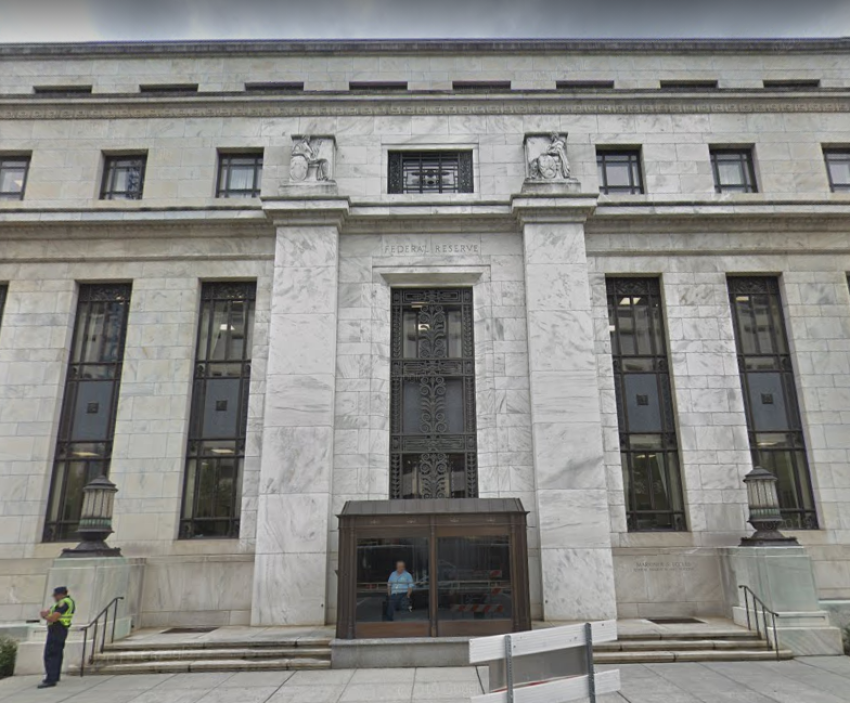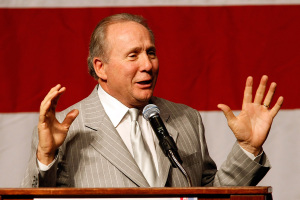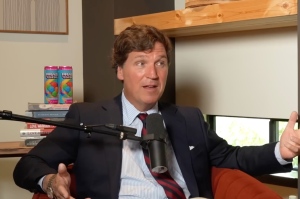The Fed thinks there's too many jobs

Last week, several reports came out that showed a healthier job market. Unemployment dropped, jobs were added, and wages grew.
Both the government statistics and the private sector alternatives showed the same thing, and yet markets concluded that the Fed would raise rates. Why? Because the markets know that the Fed follows the perverse economics of John Maynard Keynes, the most influential economist of the 20th century.
An aggressive atheist, misogynist and critic of virtues such as sexual restraint and thrift, Keynes rewrote the rules of economics in ways that are still with us. In his view, low unemployment causes inflation, and therefore it was the job of the government to come in and get people laid off so that workers would lose bargaining power, and with it, purchasing power in order to stabilize prices.
In his models, which for better or worse are our models, inflation is caused by too many people working, and not by debasing of currency. That showed up in last week's market behavior.
Big Picture: Last week was largely about the monthly employment report. That makes sense because the Fed has a dual mandate: one mandate is about inflation and the other is about employment. And since the monthly employment report is the major source of employment data, it's the single most important report on a topic which constitutes half the Fed's mission.
The report said that things were better than expected. It said that more jobs were created than expected, that unemployment rates were lower than expected and that wages were rising.
The ADP report, a private sector version of the employment report, was also better than expected. The JOLTS report, which measures job openings, was 'worse' in the sense that there were fewer job openings than the month before, but in a labor shortage, that's actually a good thing.
Usually, people want to see more job openings as a sign of growth, but in our strange economic moment, the problem isn't too many people chasing too few jobs; it's too many jobs chasing too few people. So, a JOLTS report showing fewer jobs openings is arguably a good thing.
The Fed follows something called The Phillips Curve, which is a theory that says low unemployment causes high inflation. The idea is that low unemployment gives workers leverage to negotiate higher wages and that the higher wages are a cost which gets pushed through the production process, leading to higher prices of goods and services. It doesn't matter whether the theory is right; it matters whether the Fed thinks the theory is right. They do, and therefore when labor markets are strong, the markets conclude that the Fed will fight the expected inflationary effects by selling bonds. That lowers bond prices and (since the price is in the denominator) raises rates.
The markets are not currently governed by the traditional idea of 'risk off' versus 'risk on.' They are now governed by 'Fed off' vs. 'Fed on.' The Fed was 'on,' pumping money into markets for the decade following the Great Recession, and very much 'on' while fighting the COVID shutdowns. This year, however, markets have been driven by a 'Fed off' trade, one in which the Fed reduces its interventions into the market. Last week was another 'Fed off' week.
- The futures markets implied the Fed will raise rates more and will keep doing it longer, not cutting until small cuts next July.
- Current interest rates rose, because if markets expect the Fed to sell bonds later, they try to get ahead of that and sell some now. Selling bonds means higher rates (remember, price in the denominator).
- The dollar rose, because higher rates cause international investors to buy dollars to use them to lend at higher rates here. See last week's commentary for a refresher.
- The price of gold in dollars rose despite the strengthening dollar. That's unusual. If the dollar buys more of other currencies, why didn't it buy more gold? Because the world is worried, and a worried world buys gold. When the dollar gets stronger than other currencies and the price of gold still goes up, that means the price of gold in other currencies went up more. Global investors are less worried about the U.S. than the world, which is probably why U.S. equities outperformed global equities.
- Commodities indices were generally up, mostly because of energy.
- Copper was down a bit. The rise in commodities could be an inflation thing, or a geopolitical risk thing, or a growth-on thing.
- Stocks outperformed bonds, which suggests that markets are of the opinion that the global recession fears might be a bit overblown.
These comparative returns between asset classes such as stocks, bonds, currencies and commodities fit the story of a more tight Fed, slightly better U.S. than global growth, more intractable inflation and a scenario that is neither a soft landing nor a crash. We'll see below whether the comparative returns of different sectors within asset classes also told the same story as the comparative returns between asset classes. Spoiler: they do (mostly).
This coming week the data release schedule will contain two big themes. First, there will be both consumer inflation and wholesale inflation reports. That covers half of the Fed mandate, so it could be big. Also the Fed minutes from the last meeting will be released. We know what the Fed did at the last meeting (hike rates by .75%). This week we'll find out what they said in the meeting when they made that decision.
If inflation is shown to be less than expected or if the Fed discussion shows some doubts, perhaps a dissenter or two in the ranks, then dynamics would likely reverse again, switching from expectations of a harder Fed back to expectations of a softer Fed. That's what happens when the Fed is the single largest investor, if it changes its mind, markets change accordingly.
Real Estate: REITS performed quite poorly, as one would expect given the very high mortgage rates. REITs do fit some of the other themes of the week, especially rising rates in general. However, the specific rate, mortgage, which is highly relevant for real estate seemed to be the bigger driver.
REITs performance is typically between that of equity markets and bond markets; however, last week it fell short of both, likely because of the interest rate sensitivity (real estate is a high-debt business) and lowering inflation expectations - real estate is an inflation hedge and with inflation expectations dropping, there's less demand for a hedge against it. We'll see below that TIPS, another inflation hedge, also performed badly.
US Stock Markets: Equity markets were up for the week. This would not be the normal expectation during a shift in interest rate expectations. The present value of an investments is the future cash flows discounted by the 'cost' of waiting for them. That cost is the risk-free interest rate of a treasury bond. It's the alternate use of the money. It's the missed opportunity that occurs when one makes an investment in something other than a treasury bond.
If the interest rate is rising, the only way to make the present value higher is for the future cash flows to go up. Higher prices in an environment of rising interest rate expectations implies higher growth expectations.
And higher growth expectations is what the various sector and style box performance showed. Cyclicals beat defensive stocks. Discretionary (sellers of optional products) beat staples (sellers of non-optional stocks).
Growth stocks, which by definition tend to be more growth-dependent, generally outperformed value stocks. Utilities, a classic recession hedge, strongly underperformed growth-oriented sectors, which means investors saw less probability of a recession to hedge against, although the poor utility performance might also have something to do with rising energy costs. A big increase in energy prices also explains why materials were arguably the best sector, another more optimistic "growth" trade.
Of course, in the current market dynamics, shifts towards more optimism are actually shifts towards less pessimism. Markets seem convinced that we're in for a slow-down. The optimists are the ones who expect a smaller downturn. Last week's trade was a smaller downturn trade
International Stock Markets: International equity markets were up for the week, but generally less so than the domestic equity market. This global underperformance was partly due to the rising dollar. In other words, the international underperformance was magnified by the fact that their currencies were underperforming the dollar.
In addition EM significantly underperformed DM across the world.
Last week's international equity story was partly a geographical one. Emerging Latin America, which produces the energy the price of which rose dramatically last week, was the best performing region. Developed Europe was the worst, perhaps for the same reason: high energy prices. Europe is a consumer of that expensive energy.
Bond Markets: Bond markets were generally slightly down last week, while stocks were up.
The comparison between stocks and bonds looks like an increased optimism (well, a decreased pessimism) trade. Also, comparing different types of bonds looks like a shift towards greater optimism as well.
The differences between treasuries and corporate bonds were consistent with accelerating growth, with corporate bonds significantly overperforming treasuries. Within the corporate bond sector, different credit quality groups sent the same signal, with high yield bonds performing particularly well. The growth signal sent by comparing different bond sectors conforms with the signal sent by the differing stock sectors.
On the inflation front, inflation-protected treasuries (TIPS) under-performed non-inflation-protected treasuries. This caused the yield spread between them to narrow, an indicator of a lowering of inflation expectations. Remember, when the price goes down, the yield goes up. So, if the price of TIPS goes down more than the price of regular treasuries, then the yield of TIPS goes up more than the yield of regular treasuries, which narrows the gap between them. That relationship is so well established that it is referred to as 'the inflation breakeven rate'. This market signal agrees with the inflation-lowering message of a rising dollar.
Jerry Bowyer is financial economist, president of Bowyer Research, and author of “The Maker Versus the Takers: What Jesus Really Said About Social Justice and Economics.”


























